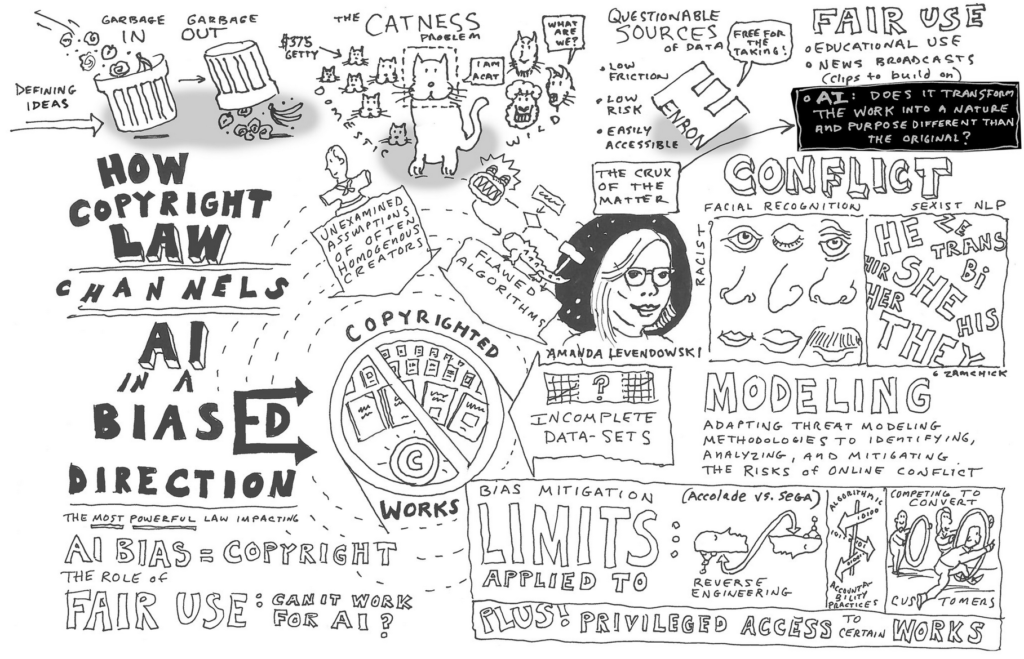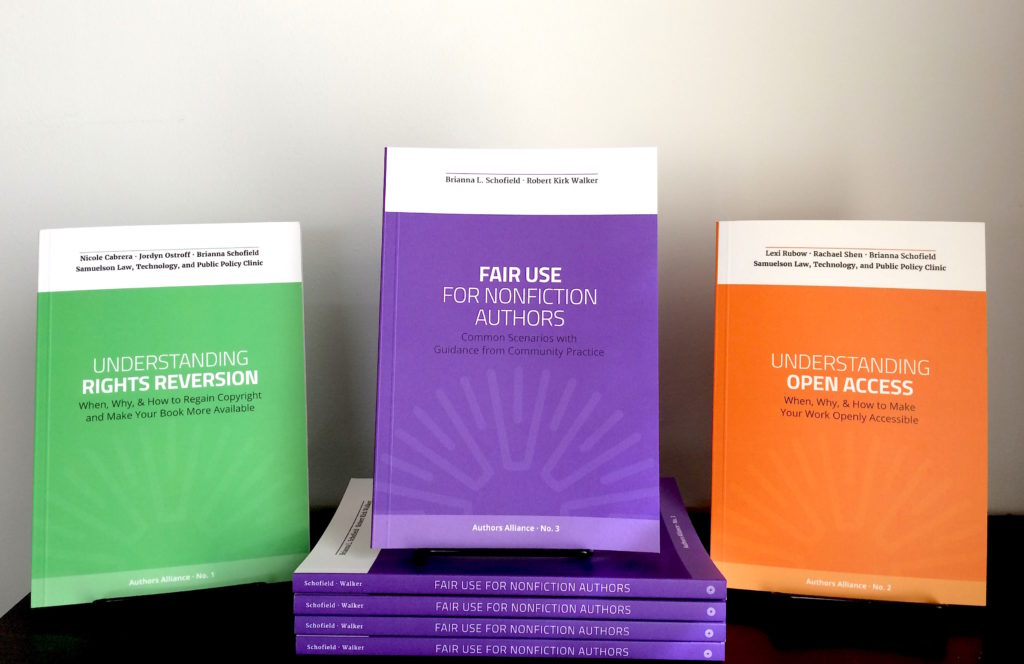Fair use has always been a key issue for Authors Alliance. When we launched in 2014, we created a Fair Use FAQ to help authors navigate this complex topic. Now, to celebrate Fair Use Week and our recently published guide to Fair Use for Nonfiction Authors, we’ve expanded and updated the FAQ to provide a comprehensive summary of key points. Read on to learn more!
- What is fair use anyway?
- What does it mean to say a use is “transformative”?
- What does it mean to say a use is “non-transformative”?
- Can I still claim fair use if I am using copyrighted material that is highly creative?
- Can I still claim fair use if I am using copyrighted material for commercial purposes?
- Can I still claim fair use if I ask the copyright owner for permission to use the material and permission is refused?
- Can I still claim fair use if I want to use copyrighted material that is unpublished?
- Are charts, graphs, and tables protected by copyright and, if so, can I rely on fair use to incorporate them into my nonfiction work?
- How does a work’s copyright status affect fair use?
- How does a work’s orphan work status affect fair use?
- Can contractual terms governing access to a work restrict the availability of fair use?
- Does the fair use analysis change when the copyrighted material I want to use is owned by a litigious estate?
- What can I do if my publisher asks me to obtain permission instead of allowing me to rely on fair use?
- Does fair use protect against claims based on legal rights other than copyright, such as privacy rights, trademark, defamation, right of publicity, and more?
- Is fair use really as unpredictable as some people say?
- What if there is no on-point best practice guide for me?
- Where can I learn more?
What is fair use anyway?
In U.S. copyright law, fair use is a use of a copyrighted work that does not infringe the exclusive rights that the law confers on authors and other rights holders.
Section 107 of the U.S. copyright act identifies four factors that courts should consider in determining whether a use is fair or infringing:
- The purpose and character of the challenged use;
- The nature of the copyrighted work;
- The amount and substantiality of the challenged use; and
- The harm the challenged use is likely to cause to the market or potential market for the work.
No factor is dispositive; all must be weighed together.
Uses for criticism, commentary, news reporting, research, scholarship, and teaching are identified in the statute as examples of favored uses. Noncommercial uses are generally more likely than commercial uses to be fair. Transformative uses are also more likely than non-transformative uses to be fair.
The scope of fair use tends to be somewhat broader for fact-intensive works, especially when done for one of the favored purposes.
A good shorthand way of considering whether a use you want to make of another’s work will be fair is whether the amount you borrowed from the other’s work is reasonable in light of your purpose and unlikely to supplant demand for purchase of the original.
(Back to top)
What does it mean to say a use is “transformative”?
A use will be considered “transformative” if it:
- Actually transforms expression in the work, as a parody of a song might do;
- Is included in a new work of authorship, as quoting from the writings of a person in a biography;
- Is used for a different purpose than the original, causing it to have a different meaning, as when a newspaper publishes a photograph that has become controversial.
Transformative uses will not always be fair. A new arrangement of a song, for instance, may well infringe the derivative work right. But especially when done for purposes of criticism or commentary, the transformativeness of a use will tend to tip in favor of fair use.
Courts have recently been receptive to the idea that copyright owners do not have the right to control all transformative uses of their works. Transformative uses are less likely than non-transformative uses to pose a risk of supplanting market demand for a work.
(Back to top)
What does it mean to say a use is “non-transformative”?
A use will be considered “non-transformative” if it is, for example, an exact copy of a work or part of a work. Making a time-shift copy of a television program is an example of a non-transformative use that courts have deemed fair. Posting a chapter of a book on an electronic course reserve system is another example of a non-transformative use. (The Cambridge University Press v. Becker case, which is presently pending before an appellate court, is testing whether this kind of use is fair.) Scanning a photograph you like and posting it online is a third example of a non-transformative use.
Non-transformative uses may be and often are fair uses, but they are somewhat less likely to be fair uses insofar as they pose a stronger risk of harming the market for the work. If someone makes a copy of a movie or computer program, for instance, instead of buying a copy of his own, that non-transformative use is more likely to have a negative effect on the copyright owner’s market. Even though one person’s peer-to-peer file-sharing of music or a movie would seem to be relatively trivial, courts take into account that if they say this use is fair, then many others will do the same thing and the aggregation of these uses are likely to cause market harm.
(Back to top)
Can I still claim fair use if I am using copyrighted material that is highly creative?
Yes. While courts do consider whether the copyrighted material used is primarily factual or creative under the second factor, “the nature of the work,” this factor is rarely decisive on its own. Courts still must weigh all four factors, including the “purpose of the use.” Where the purpose of the use is transformative, such as when a nonfiction author comments on copyrighted material or uses copyrighted material to support a point, and the amount used is reasonable, the second factor rarely affects the final outcome of fair use cases.
(Back to top)
Can I still claim fair use if I am using copyrighted material for commercial purposes?
Yes. While “noncommercial” uses may be a plus in a fair use analysis, there are no categorical rules: Commercial uses can be fair use, and not all noncommercial uses will be fair use. In fact, some of the important court victories for fair use over the past two decades have been won by defendants whose activities were commercial, including musicians, publishers, and artists who sell their work (sometimes at substantial prices).
(Back to top)
Can I still claim fair use if I ask the copyright owner for permission to use the material and permission is refused?
Yes. You do not have to ask permission or alert the copyright holder when a use of materials is protected by fair use. But, if you choose, you may inquire about permissions and still claim fair use if your request is refused or ignored. In some cases, courts have found that asking permission and then being rejected has actually enhanced fair use claims. In fact, the Supreme Court has said that asking for permission may be a good faith effort to avoid litigation.
(Back to top)
Can I still claim fair use if I want to use copyrighted material that is unpublished?
Yes. Congress amended the Copyright Act in 1992 to explicitly allow for fair use when using unpublished works after several court decisions suggested that the use of unpublished materials would rarely be fair use. Under current copyright law, the fact that a work is unpublished “shall not itself bar a finding of fair use if such finding is made upon consideration of all the [fair use] factors.”
While a court may still consider a work’s unpublished status to weigh against fair use when evaluating the “nature of the work,” this factor is rarely decisive on its own and courts still must weigh all of the fair use factors, including the purpose of the use. The purpose of the use may weigh against fair use if the unpublished material is being used in a frivolous or exploitative manner. On the other hand, the purpose of the use may weigh in favor of fair use if the unpublished material transforms the original material (by, for example, using the original material as the object of criticism or commentary) and contributes to the public’s interest in advancing knowledge.
(Back to top)
Are charts, graphs, and tables protected by copyright and, if so, can I rely on fair use to incorporate them into my nonfiction work?
Charts, graphs, and tables may be protected by copyright, but the underlying facts are not copyrightable. Creative choices in the way that facts are presented in a chart, graph, or table may be sufficiently original to warrant copyright protection. That said, where applicable, you may still be able to rely on fair use to use a chart, graph, or table that includes expressive elements.
(Back to top)
How does a work’s copyright status affect fair use?
Copying of works that are not protected by copyright is not copyright infringement, regardless of fair use. But sometimes it can be difficult to determine whether a work is protected by copyright. For example, you may not be able to determine whether a work’s copyright has expired, or you may not be sure whether a scientific chart has the requisite level of creativity to warrant copyright protection. Even where you cannot determine a work’s copyright status, you may still want to understand whether the use of the material would be permitted by fair use should the material be protected by copyright. In fact, in some cases determining whether the use would be permitted by fair use may be easier than resolving the work’s copyright status.
(Back to top)
How does a work’s orphan work status affect fair use?
Orphan works are works for which it is difficult or impossible to identify or locate the work’s copyright owner, even after a diligent search. The use of an orphan work may be permitted by fair use, just like any other work. In fact, orphan works often have characteristics that make fair use more likely. For example, orphan works are by definition not active in the market, limiting any resulting economic harm to rightsholders. In some cases, determining whether the use of an orphan work would be permitted by fair use may be significantly easier than securing permission from a rights holder that, by definition, is difficult or even impossible to track down.
(Back to top)
Can contractual terms governing access to a work restrict the availability of fair use?
Yes. For example, some archives, museums, and commercial collections that control access to works place contractual restrictions on the use of those works, even when use of the work would otherwise be permitted by fair use (and, in some cases, even when the work itself is in the public domain!). This is beginning to change, and some archives and museums have already abandoned these practices. However, if you are a party to such a contract, your ability to use materials you’ve accessed may be limited by the terms of the contract. For example, a biographer who accesses her subject’s personal papers through an archive may find that, as a condition of accessing those materials, the subject’s estate forbids quoting from the materials without the express permission of the estate. Similarly, an art critic may find that he has agreed to terms governing the use of photographs he accessed through an online archive.
At least some courts have held that such contracts may be enforced, even if the restricted use would be fair use as a matter of copyright law. In these cases, nonfiction authors cannot rely on fair use since demands for permission in this context are based on contractual claims, not copyright. As such, nonfiction authors should pay careful attention to the conditions of access to source materials and may want to consider negotiating for better terms that do not restrict their research and writing goals.
(Back to top)
Does the fair use analysis change when the copyrighted material I want to use is owned by a litigious estate?
No. Some estates are notoriously aggressive in trying to prevent the use of materials to which they own the copyrights. However, just because a copyright owner is forceful in asserting copyright claims doesn’t make fair use any more or less likely. It may, however, change your assessment of the practical risk that a copyright owner might complain or sue. Authors in this situation may be especially interested in obtaining errors and omissions coverage prior to publicizing their work.
(Back to top)
What can I do if my publisher asks me to obtain permission instead of allowing me to rely on fair use?
Some publishers may require that authors get permission to use copyrighted materials in their works instead of allowing them to rely on fair use. If you find yourself in this situation, you may find it helpful to ask your publisher to reconsider its position and to explain why you think your intended use is protected by fair use. You may also want to share with them related codes of best practices, if relevant. If fair use is important to you or essential to your project, you may want to search for a publisher that recognizes fair use before signing a publishing contract.
(Back to top)
Does fair use protect against claims based on legal rights other than copyright, such as privacy rights, trademark, defamation, right of publicity, and more?
No. Fair use is a limitation on exclusive right under copyright and does not apply to other legal claims. When using third party materials, authors should consider legal issues beyond copyright, such as contractual restrictions, privacy rights, trademark law, right of publicity, and defamation; and community norms, like rules against academic plagiarism.
(Back to top)
Is fair use really as unpredictable as some people say?
It is sometimes said that fair use is unpredictable. Larry Lessig, for instance, spoke of fair use as “the right to hire a lawyer.” For some people, this perception of unpredictability has a chilling effect (that is, they are unwilling to take the risk that the use will be held unfair).
To provide guidance, the Center for Media and Social Impact at American University has published some “best practices” guidelines to help people become more comfortable with making fair uses, including one for documentary filmmakers and one for user-generated video content (remixes and mashups). The Center for Media and Social Impact has published a template to help users in particular communities to form their own best practices guidelines.
The “best practices” approach is catching on. In fact, Authors Alliance published a guide to Fair Use for Nonfiction Authors, which features guidance based on a meta-analysis of existing best practices guides.
(Back to top)
What if there is no on-point best practice guide for me?
Even if no best practice guidelines exist for your community, it is worth knowing that there is more predictability in the fair use caselaw than some have suggested. As noted above, a use is likely to be fair if done for a purpose such as criticism, comment, news reporting, scholarship, teaching and research as long as what you take from another’s work is reasonable in light of your purpose. Here are some examples:
- Quoting small amounts of text (8% or less) from each of 25 writings in a critical biography of L. Ron Hubbard was held a fair use in New Era Publications Int’l ApS v. Carol Publishing Group in 1990.
- Reproducing seven posters in significantly reduced sizes that had once advertised Grateful Dead concerts in a 480 page book on the cultural history of the band was held to a fair use in Bill Graham Archives v. Dorling Kindersley in 2006.
- Preparing a reference work about the characters, plot, and special features of fictional works was held to be fair use in Warner Bros. Entertainment v. RDR Books (although RDR had to change some places where there was very close paraphrasing of passages from Harry Potter novels) in 2008.
- Scanning student papers into a database designed to detect plagiarism was held fair use in A.V. v. iParadigms in 2009.
- Retelling the story of Gone With the Wind from the vantage point of a slave was held a fair use in Suntrust Bank v. Houghton Mifflin Co. (However, an unauthorized sequel to Catcher in the Rye, imagining Holden Caulfield as an old man, was held unfair in Salinger v. Colting. Sequels, in general, are likely to be considered infringing derivative works. One reason the use was fair in Suntrust was because of it was a critical commentary on the original and the Mitchell estate made clear it would never have licensed this kind of use of the famous novel.)
(Back to top)
Where can I learn more?
For further reading on fair use, we recommend:
(Back to top)
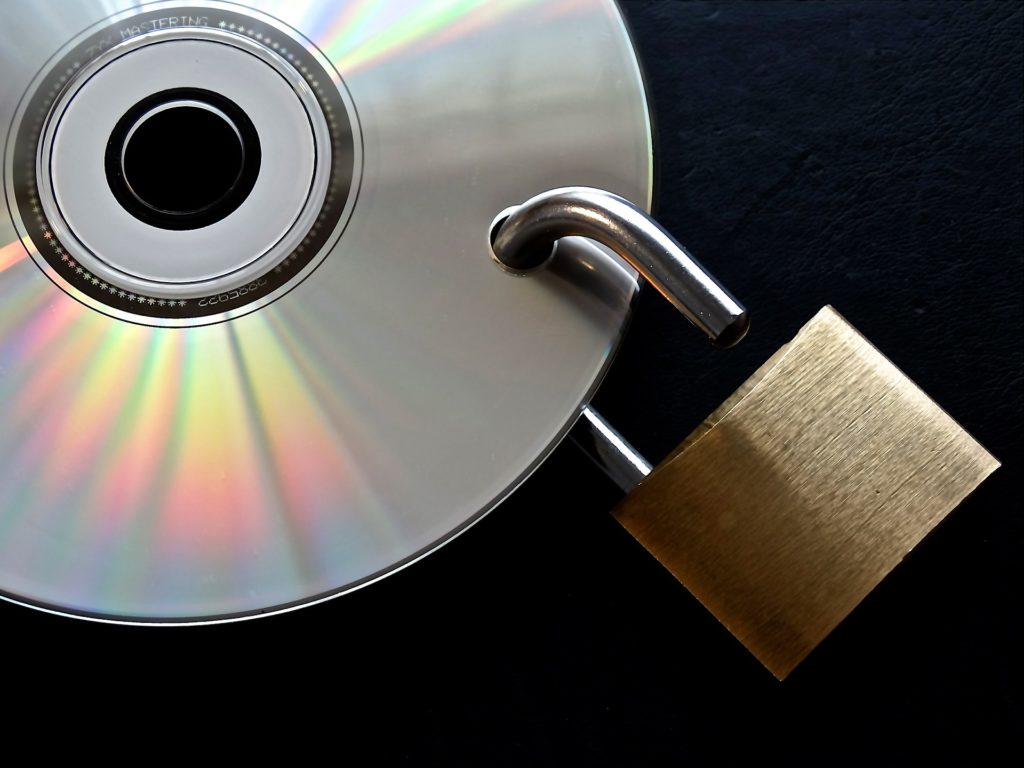

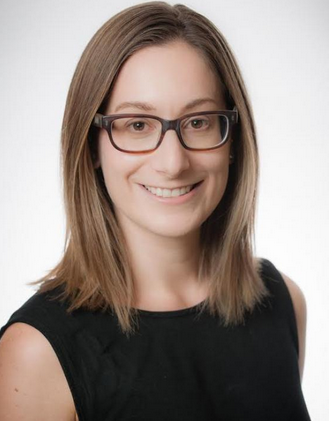 We are grateful to Dr. Kylie Pappalardo of the Queensland University of Technology in Brisbane, Australia, for contributing the following guest post, which highlights the results of her recent work with Patricia Aufderheide, Jessica Stevens, and Nicolas Suzor on copyright and creative incentives in Australia.
We are grateful to Dr. Kylie Pappalardo of the Queensland University of Technology in Brisbane, Australia, for contributing the following guest post, which highlights the results of her recent work with Patricia Aufderheide, Jessica Stevens, and Nicolas Suzor on copyright and creative incentives in Australia.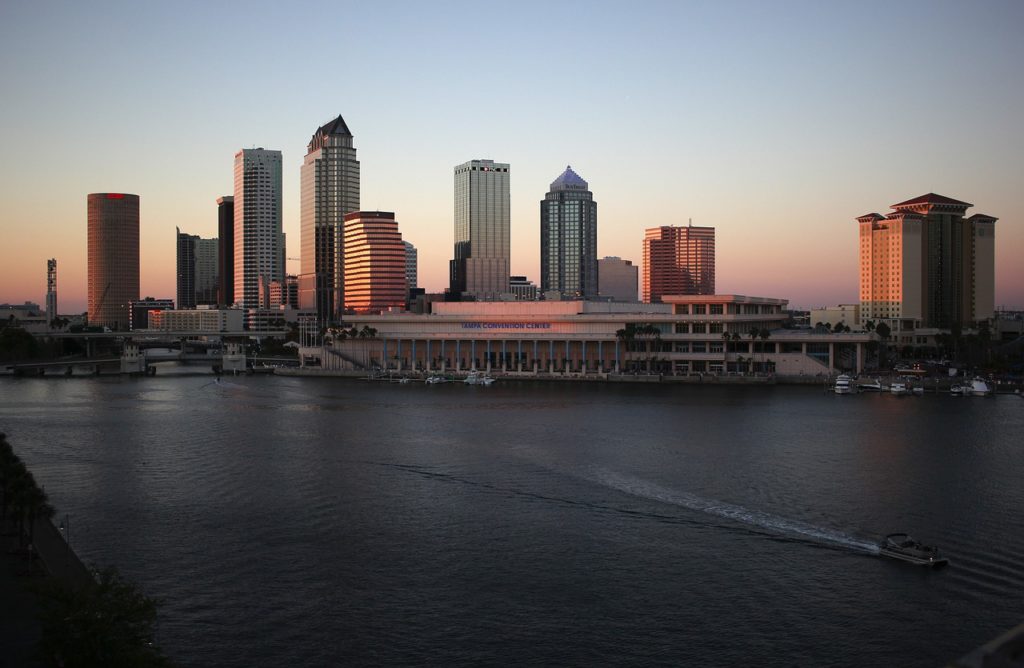
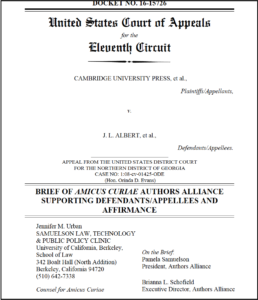 What effect does fair use have on incentives to create? For some academic authors, there is growing evidence that fair use will not diminish, and may even enhance, their incentives to create and distribute scholarly works because it promotes their goals of advancing the progress of knowledge, builds reputational capital, and increases the impact of their works.
What effect does fair use have on incentives to create? For some academic authors, there is growing evidence that fair use will not diminish, and may even enhance, their incentives to create and distribute scholarly works because it promotes their goals of advancing the progress of knowledge, builds reputational capital, and increases the impact of their works.